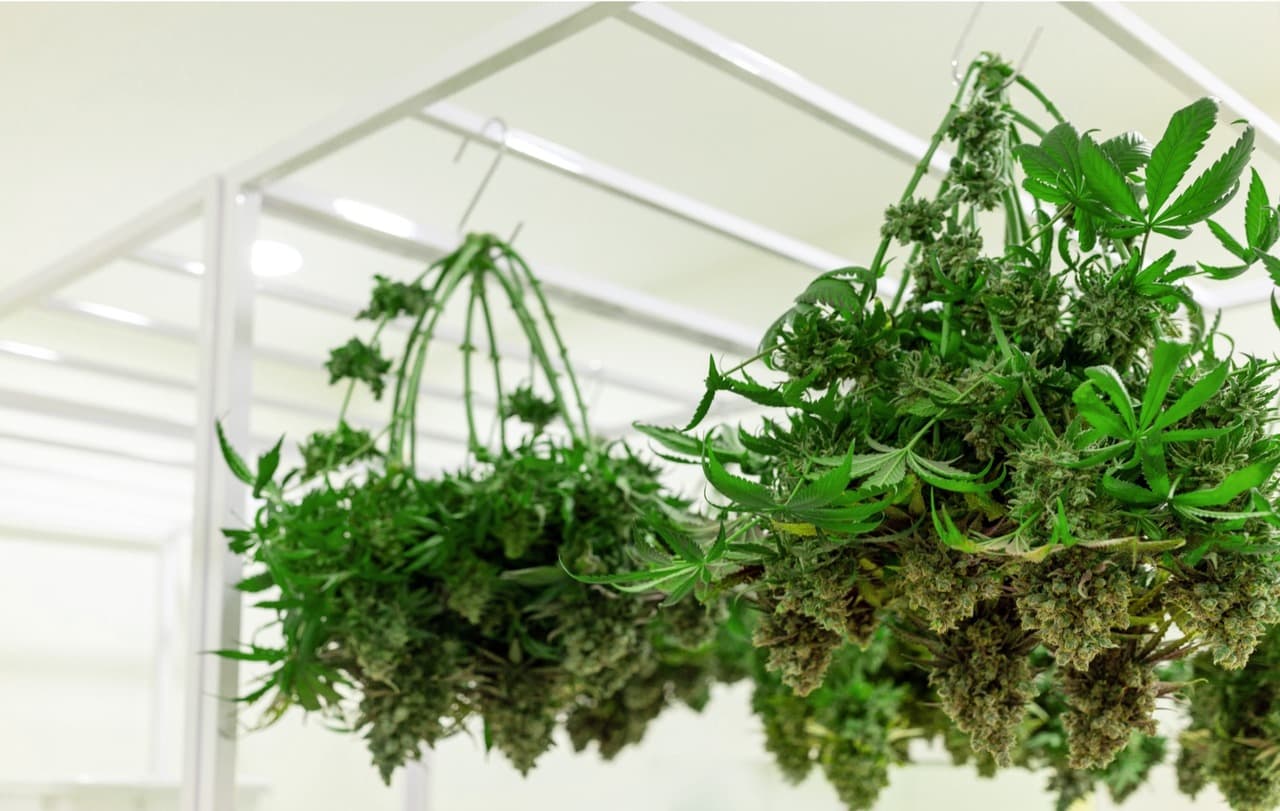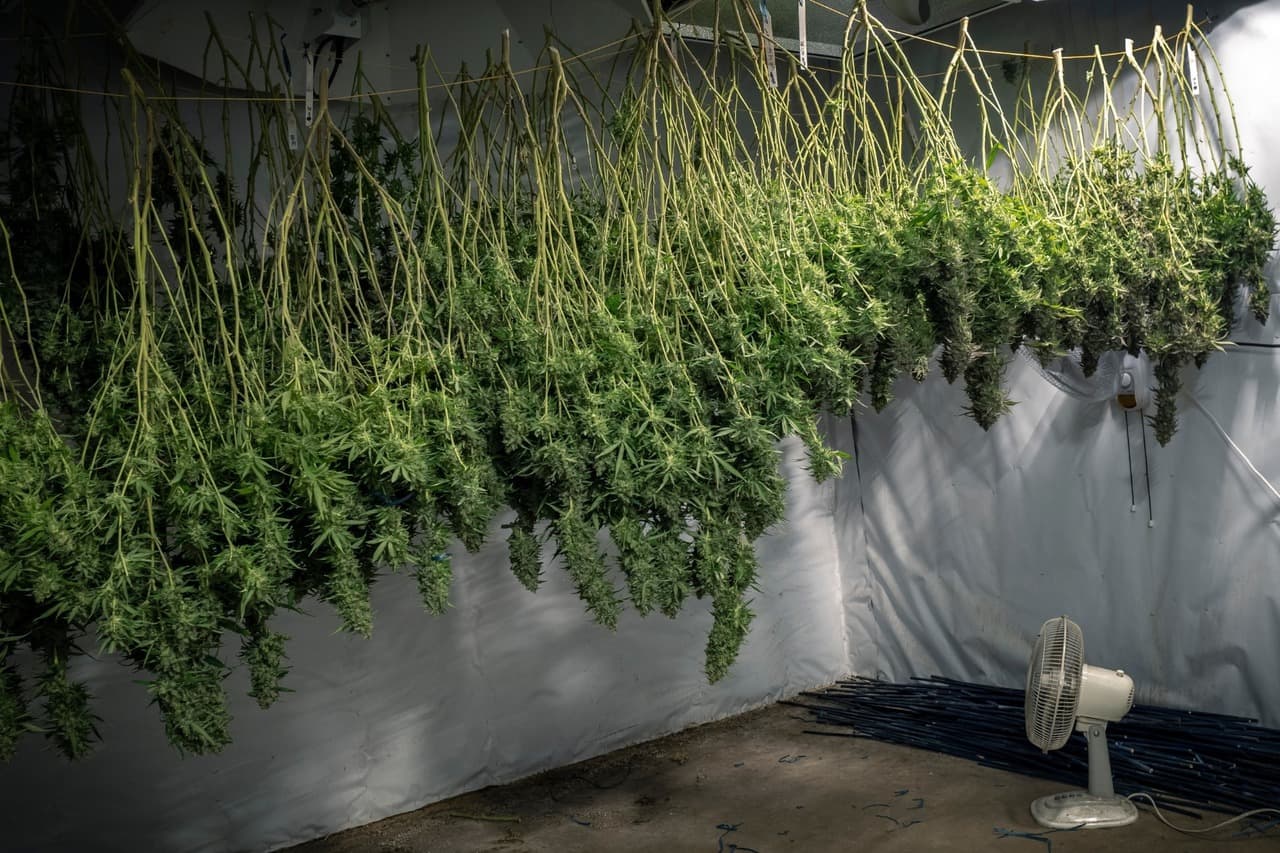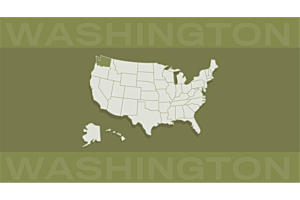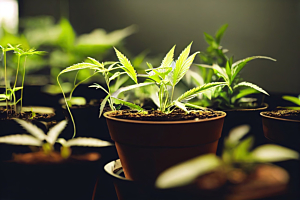Contents
Why is drying cannabis critical?
How to dry cannabis buds step-by-step
What humidity level should you aim for when drying cannabis?
Frequently asked questions about drying weed
You created the ideal environment, gave your plants the best care possible, and can now enjoy a bountiful harvest. Although it may seem like the end of the cultivation process, some final steps remain. If you want to boost the quality of your cannabis buds, it’s vital to learn how to dry weed.
Did you know that some seasoned cultivators describe this process as magic? Keep reading to discover the benefits of drying marijuana and learn how to implement it step-by-step. With this knowledge, expect to collect a stash of delicious, smokable nugs.
Why is drying cannabis critical?
Knowing how to dry and cure weed is essential to producing top-notch cannabis. Feminized marijuana seeds typically offer impressive yields, and these processes can raise your buds’ quality to the next level.
Here are some benefits of drying your freshly harvested nugs:
Enhances bud potency
Tetrahydrocannabinol (THC) gradually degenerates into cannabinol (CBN) and loses almost 75% of its potency when exposed to air and light. Reducing these elements and the temperature prevents degradation, offering you a powerful smoking experience.
Improves bud quality
The cannabis drying process can reduce bud harshness and refine smoothness by breaking chlorophyll down. Curing cannabis dissolves unnecessary minerals and sugars produced in the previous exercise, creating a higher-quality product and a better smoking experience.
Maintains terpene composition
Premium marijuana seeds contain various terpenes that produce aromatic and delectable buds. Drying and curing cannabis at optimal temperatures preserves these delicate compounds, which only degrade when temps are around 70–100°F.
Avoid rushing the process by using a microwave or oven. Be patient and take time to retain the terpenes that deliver more fragrant and flavorful nugs.
Prevents mold
Another reason to know how to cure and dry weed is that newly-cut nugs have excess moisture, increasing the likelihood of fungus problems. It’s vital to prevent cannabis mold, as infected weed isn’t tasty. It may cause unpleasant side effects like lung irritation, coughing, wheezing, or nausea.
Smoking contaminated weed could lead to severe health complications for immunocompromised users and those with allergies or pre-existing respiratory issues. Drying cannabis buds can help reduce this risk.
Allows long-term storage
Hanging drying cannabis lengthens its shelf life and removes any excess moisture contained in the nugs during harvest. Place the processed buds in airtight containers and store them in a cool, dark, and dry spot.

How to dry cannabis buds step-by-step
There are many ways to dry your weed, including:
- Freeze drying
- Oven baking
- Dehydrating
- Dry ice curing
- Water curing
While these methods speed up the process, it’s best to avoid them, as drying cannabis quickly affects bud quality. Without sufficient time to cure, the nugs may smell bad and leave an undesirable aftertaste. There’s also the potential to experience side effects like paranoia or migraines.
The best way to dry and cure your weed is to do it slowly. Apply the following steps to optimize the process:
Step 1: Set up the drying area
Setting up an area where you can control the temperature and humidity is critical. As quick-drying cannabis can leave you with poor-tasting nugs, a suitable environment allows you to dictate the length of the process.
Step 2: Organize your supplies
Preparing the essential items beforehand enables you to get through the drying process without any hitches. The supplies you require for your cannabis drying kit include:
- Wire or string to hang the bud branches.
- Trimming shears or scissors.
- Disposable gloves to wear while pruning as the trichomes are sticky.
- Rubbing alcohol to remove the goo from your scissors or shears as you trim and avoid a mess.
- A drying rack to store nugs without stems. We don’t recommend this method unless your environment has high humidity, as you might misshape them.
- Mason jars or a cannabis drying container. It’s trickier to properly cure your buds using the former as they’re generally too airtight. The latter typically allows your nugs to breathe better.
- A hygrometer is essential when drying cannabis leaves as it measures the humidity levels inside your canisters.
Step 3: Cutting and trimming
Cut 12–16-inch branches and trim the foliage, sugar leaves, and smaller stems. In humid climates, remove everything except the buds to prevent moisture from attracting mold and disease. Then, store the nugs in a drying box for cannabis.
When growing in dry environments, retain some fan leaves to keep your plants damp and prevent them from drying too fast. Use the trims to make cannabis edibles or extracts.
Step 4: Dry your weed
The next step to learning how to dry wet weed is hanging your branches in a cannabis drying tent. Ensure it’s cool, dark, and well-ventilated. Use a fan, if necessary, to circulate the air. If you have a drying rack for cannabis, flip the buds regularly, so they don’t retain moisture or lose their shape.
Installing an air conditioner or humidifier helps to create an environment with optimal humidity for drying cannabis. Keep the temperature between 60–70°F.

What humidity level should you aim for when drying cannabis?
Knowing how to dry weed fast includes preventing moisture build-up. Maintain the humidity levels at 45–55% and control the conditions using the following equipment:
- Air conditioner: Cools the air and lowers dampness.
- Dehumidifier: Increases the temperature and reduces the drying humidity.
- Evaporator cooler: Cools the area and raises moisture levels.
- Humidifier: Heats the space and increases the condensation in the air.
- Heater: Raises the cannabis drying temperature and lowers the amount of vapor.
Frequently asked questions about drying weed
Do you have any more queries on how to dry out weed? Find answers to some of the most common questions below.
What temperature is best for drying weed?
The optimal drying temp for marijuana is around 60–70°F. Avoid warmer conditions as they can destroy the terpenes and potentially affect CBD and THC. It’s vital to set up your cannabis drying room correctly to control the environment and maximize results.
How long does it take to dry marijuana properly?
How long does it take weed to dry? This process typically takes around 14 days, but the duration depends on a few factors:
- Bud size: Larger and denser nugs take longer to dry.
- Trimming method: Larger stems dehydrate slower than branches and individual colas as they retain more moisture.
- Optimal conditions: Temperature, humidity, and airflow affect the drying process.
When do I know my buds are properly dried?
Use a drying chart to monitor the process or check the nugs to know how long to dry the weed. Bend a small branch. If it snaps, the buds are dry. Continue the process if the stem doesn’t break or if you notice stringy plant residue.
If you have nugs on cannabis drying racks, inspect their progress daily. Observe them shrinking and losing weight as they dry out. Touch them to feel if they’re ready.
What happens if cannabis isn’t dried properly?
Your plants may develop bud rot if they contain excess moisture. This problem is more likely when drying cannabis in tents as there’s a risk of high humidity. Moist nugs are ideal environments for breeding fungus.
Moldy marijuana doesn’t taste good and might result in unwanted side effects. For some smokers, the reactions are mild and don’t last. Coughing, nausea, and vomiting are possible responses.
People with allergies or compromised immune systems could have respiratory problems if they smoke bud rot cannabis.
What’s the best way to store buds after drying?
Once you learn how to dry weed, you may want to store it for future use. Glass and metal jars are excellent options as they prevent moisture build-up. Ensure you use containers made of high-quality material, as low-grade ones can affect bud taste.
The method is simple if you already know how to store weed seeds. Keep your nugs in a cool, dark, and dry space, like a cabinet or drawer. Maintain the temperature and humidity to avoid too many fluctuations.
Put the magic into your buds
Quality seeds are an excellent way to produce bountiful yields but don’t overlook the importance of drying cannabis. This post-harvest process is vital to getting potent and delicious buds.
As tempting as it is to get the nugs ready for consumption, don’t rush them. Avoid quick procedures, like using a cannabis drying machine, as you may get poor-tasting weed.
Check out more growing tips on our blog and find quality seeds at our store.











